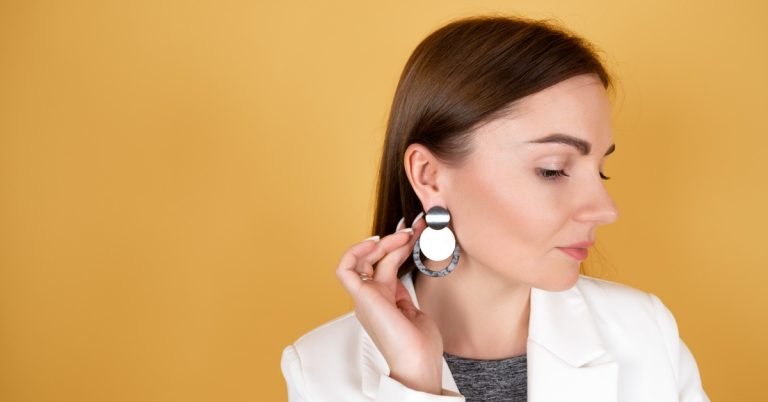When Can You Change Your Earring?
Changing your earrings can be a fun and creative way to express yourself. It’s important, however, to take the proper precautions when doing so in order to avoid any potential risks or complications.
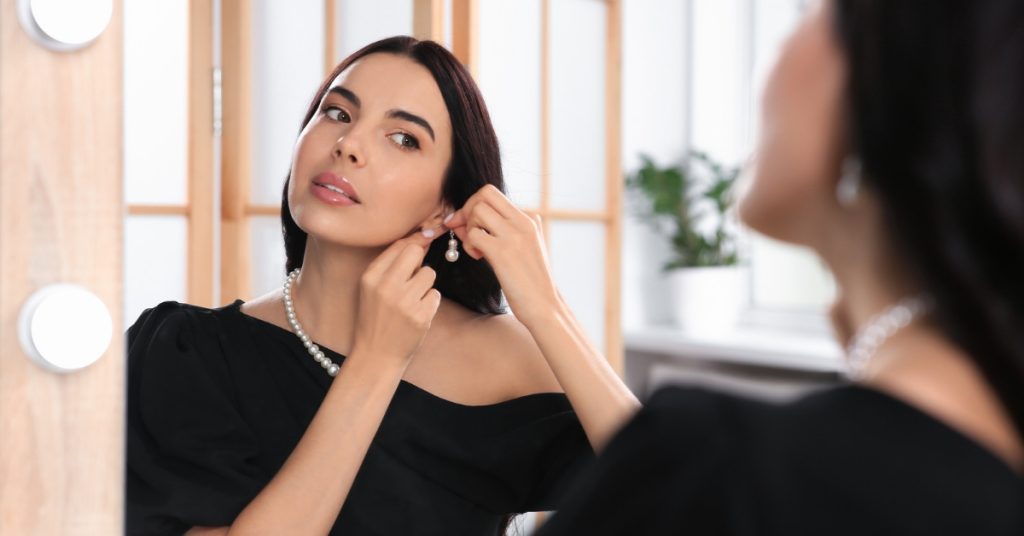
In this article, you’ll learn about considerations before changing your earrings, time frames for changing them, how to insert and remove them safely, and tips for taking care of piercings. With the right information in hand, you can ensure that changing your earring is a safe and enjoyable experience!
Table of Contents
Key Takeaways
- It is important to allow enough time for a piercing to heal before changing earrings.
- Signs that a piercing is not fully healed include pain, redness, and discharge.
- Proper aftercare for piercings includes washing with mild soap and using an antiseptic solution.
- When choosing earrings, it is important to consider factors such as overall look, occasion, materials, piercing care instructions, and allergies.
Considerations Before Changing Your Earrings
Before giving in to the urge to swap out your earrings for something new, consider how the change will affect your overall look. When picking materials for a new set of earrings, make sure they’re comfortable and won’t cause irritation during the healing process.
Additionally, ensure that you pick earrings that are appropriate for the occasion – whether it’s a night on the town or an important meeting at work. For those with multiple piercings, consider how all of them work together as well as separately. Also, see our post on how to choose the right earrings
What looks good in one combination may not look as attractive when you switch up your existing pieces. You want to be able to mix and match without having to worry about clashing styles or colors.
Take into account the type of lifestyle you lead and how often you plan to change your earrings too; this goes along with being mindful of comfort levels related to materials used and design preferences. If you’re someone who likes subtle changes more often than dramatic ones, opt for smaller pieces that don’t stand out too much but still add interest to an outfit.
With all these considerations in mind, it’s time to move on and discuss time frames for changing your earrings.
-
Product on sale
 Exquisite Design Ladies WatchOriginal price was: $63.00.$27.00Current price is: $27.00.
Exquisite Design Ladies WatchOriginal price was: $63.00.$27.00Current price is: $27.00. -
Product on sale
 Hip Hop Sunglasses For WomenOriginal price was: $23.00.$15.00Current price is: $15.00.
Hip Hop Sunglasses For WomenOriginal price was: $23.00.$15.00Current price is: $15.00. -
Product on sale
 Metal Frame Hexagon Sunglasses UV400Original price was: $23.00.$15.00Current price is: $15.00.
Metal Frame Hexagon Sunglasses UV400Original price was: $23.00.$15.00Current price is: $15.00. -
Product on sale
 Vintage Unisex Sport EyeglassesOriginal price was: $26.00.$15.00Current price is: $15.00.
Vintage Unisex Sport EyeglassesOriginal price was: $26.00.$15.00Current price is: $15.00. -
Product on sale
 Vintage Square SunglassesOriginal price was: $30.00.$15.00Current price is: $15.00.
Vintage Square SunglassesOriginal price was: $30.00.$15.00Current price is: $15.00. -
Product on sale
 Cat Eye Women’s Sunglasses UV400Original price was: $24.00.$12.00Current price is: $12.00.
Cat Eye Women’s Sunglasses UV400Original price was: $24.00.$12.00Current price is: $12.00.
Time Frame for Changing Your Earrings
Ready to switch up your look? Try changing out your earrings for a fresh style any time you want! Your earrings should have no problem handling everyday wear and tear, but it’s important to remember that the materials used in making them may require special care.
Depending on the type of earring and how often you plan to change them, there are various considerations when deciding how often it’s okay to switch them out. Here’s a list of ideas:
- Check the composition of your earring materials – Different metals and stones can react differently with certain cleaning products or body chemistry.
- Observe piercing care instructions – Infections are not uncommon if proper piercing procedures are not followed.
- Consider whether you’re allergic to any metals – Certain metals such as nickel can cause painful itching or rashes in some people.
- Think about how often you’d like to change your look – Some people prefer keeping their style consistent while others like switching up their accessories more regularly.
No matter what kind of earrings you choose, make sure they fit comfortably so they don’t irritate your skin or cause discomfort when wearing them for longer periods of time. Taking good care of your piercings is key for avoiding potential skin irritation and infection too, so don’t forget to clean and sanitize your earrings thoroughly before each use. Also, endeavor to see our post to know when you can change earring after piercing.
Cleaning and Sanitizing Your Earrings
To keep your earrings looking their best, it’s important to clean and sanitize them regularly; think of it as giving them a spa day!

It is important to be aware of the different sterilizing methods available for cleaning and sanitizing your jewelry. A good option is to use an alcohol-based solution with 70% or higher concentration. You can also use antibacterial soap or specialized jewelry cleaning solutions. It is also important to ensure you’re not using any harsh chemicals that may damage the metals used in the earrings.
When it comes to the healing process, make sure you remove your earrings for at least 2 weeks when piercing new ears or re-piercing old ones. This allows for optimal healing conditions and helps reduce infection risk.
Once healed, remember to thoroughly clean and sanitize your earrings before wearing them again. Additionally, if you have been swimming in heavily chlorinated water, take care to wipe off any residue from your earrings after swimming before putting them back on again.
Cleaning and sanitizing your earrings should become part of a regular routine in order to maintain their beauty over time. Following these simple steps will help ensure that your piercings stay healthy, and that you enjoy wearing beautiful jewelry pieces without risking irritation or infection! With proper care, you can easily insert and remove your earrings with confidence whenever desired.
How to Insert and Remove Your Earrings
Inserting and removing your earrings can be a bit tricky. Before you attempt it, make sure to wash your hands or use rubbing alcohol to sanitize them.
Then, get a good grip on the post of the earring, hold it close to your earlobe, and give a gentle push until the back is secure.
To remove an earring, grasp the post firmly and unscrew the backing off with your fingers.
Inserting Your Earrings
Taking the plunge and slipping your earrings into place can be an exciting moment! It’s important to take care of your piercings while they’re healing.

You’ll want to make sure that you’ve properly cleaned them before inserting, with a mild soap and warm water. Additionally, it’s best to use freshly washed hands when handling jewelry.
If you have freshly pierced ears, give them at least 4-6 weeks to heal before changing out your earring. This will help ensure that the hole is completely healed and ready for another piece of jewelry without any complications.
When inserting your earring, hold gently onto the back part of the post with one hand and push down on the front end with your other hand until it clicks into place. Make sure not to twist or turn as this may cause discomfort or damage the piercing hole in some cases.
The same goes for when removing; hold onto the back end and pull straight off of your lobe without rotating. Doing so will help keep irritation and pain from occurring during these moments of transition between different pieces of jewelry.
Removing Your Earrings
Once the time has come to switch out your earrings, it’s like taking off a hat that no longer fits – a sign of growth and progress. To safely remove your earrings, use a mild soap or saline solution to soften the area around your piercing. This helps reduce discomfort and pain when you take out your jewelry.
Here are some tips for removing earrings in style:
- Take note of the latest earring trends so you can update your look with ease
- Keep an extra pair handy so you don’t forget one at home
- Don’t be afraid to ask for help if you’re experiencing any piercing pain
Removing your old earrings can feel like saying goodbye to an old friend — but finding new pieces that fit better with who you are today is always worth it!
From there, you’ll be ready to explore different types of earrings and find pieces that truly express yourself.
-
Product on sale
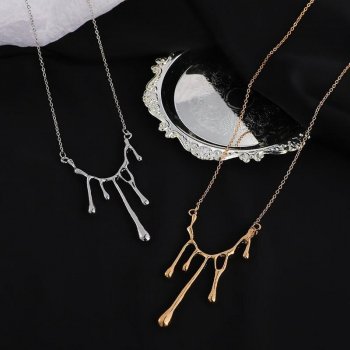 Elegant Liquid Drop Shape Yarn Pendant NecklaceOriginal price was: $8.32.$7.49Current price is: $7.49.
Elegant Liquid Drop Shape Yarn Pendant NecklaceOriginal price was: $8.32.$7.49Current price is: $7.49. -
Product on sale
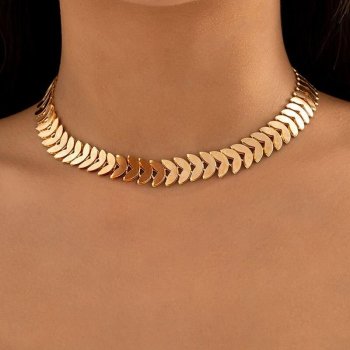 Gold Petal Choker Necklace for WomenOriginal price was: $11.73.$8.80Current price is: $8.80.
Gold Petal Choker Necklace for WomenOriginal price was: $11.73.$8.80Current price is: $8.80. -
Product on sale
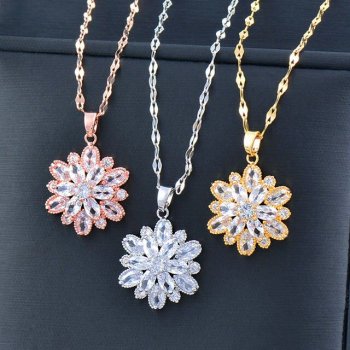 Womens Gold-Plated Crystal Flower Pendant ChokerOriginal price was: $11.73.$8.80Current price is: $8.80.
Womens Gold-Plated Crystal Flower Pendant ChokerOriginal price was: $11.73.$8.80Current price is: $8.80. -
Product on sale
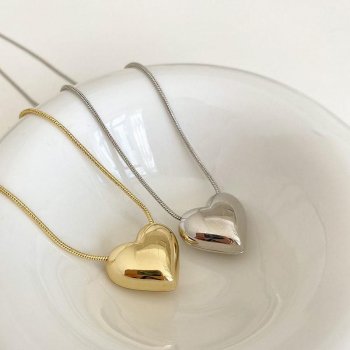 Gothic Trendy Heart Pendant NecklaceOriginal price was: $13.90.$6.95Current price is: $6.95.
Gothic Trendy Heart Pendant NecklaceOriginal price was: $13.90.$6.95Current price is: $6.95. -
Product on sale
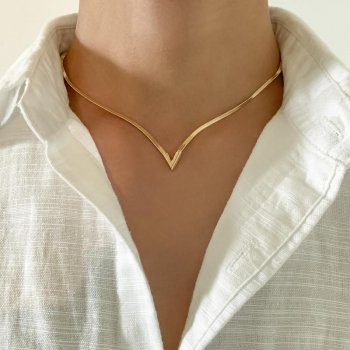 Elegant V-Shaped Flat Snake Chain NecklaceOriginal price was: $7.21.$6.49Current price is: $6.49.
Elegant V-Shaped Flat Snake Chain NecklaceOriginal price was: $7.21.$6.49Current price is: $6.49. -
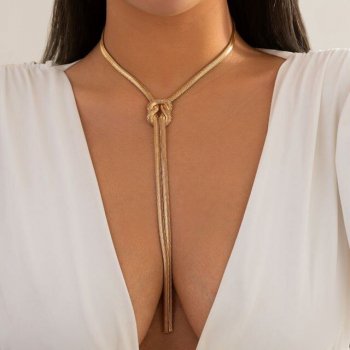 Tassel Twist & Flat Snake Chain Chunky Necklace$9.65
Tassel Twist & Flat Snake Chain Chunky Necklace$9.65
Different Types of Earrings
You’ll love the different types of earrings out there – from studs to hoops and beyond! Whether you’re looking for something classic, like a diamond stud, or something more daring, like a dangling charm hoop, you can find an option that fits your style. To help narrow down your search, here’s a quick overview of the four main types of earrings.
| Earrings | Styling Tips | Choosing Styles |
|---|---|---|
| Studs | Keep it minimal with just one pair in each lobe. | Choose small designs for everyday wear. |
| Hoop Earring | Layer them up and mix metals for an edgy look. | Go bold with large hoops for special occasions. |
| Drop Earrings | Play around with colors and textures to create contrast. | Pick long drops to boost any outfit’s glam factor! |
| Charm Hoops | Add extra flair by accessorizing with charms and beads. |
With so many options available, it’s easy to find something that matches your individual style preferences perfectly! When choosing materials for your jewellery pieces however, be sure to select hypoallergenic ones so as not to irritate sensitive skin. That way you can keep changing your earring styles without worrying about any discomfort or adverse reactions!
Choosing Hypoallergenic Materials
When it comes to earrings, hypoallergenic materials are a must if you want to be sure your jewellery will never cause any skin irritation – even if it’s so gorgeous that it takes your breath away! Hypoallergenic jewelry is made of materials such as titanium, sterling silver, and gold, which are unlikely to irritate sensitive skin.
When selecting an earring for yourself or someone else, make sure the material is clearly labeled as hypoallergenic. Additionally, proper piercing care should be followed when choosing and wearing hypoallergenic earrings. This means regularly cleaning the piercing with a saline solution or mild soap and water to reduce the chance of infection.
When choosing hypoallergenic earrings, look for ones that have been approved by the FDA or other medical organizations. To ensure quality and safety, only purchase from reputable jewelers who stand behind their products. Moreover, take into consideration any allergies you may have when selecting jewelry since some metals can still cause reactions in certain people with sensitive skin.
No matter what type of earring you choose, it’s important to give your ears time to heal before switching out styles or sizes. Over time, this can help prevent any scarring or damage from happening due to frequent changes in jewelry. With that said, heading into the next section about possible complications of changing your earrings too soon is vital knowledge for anyone considering making a switch anytime soon!
Possible Complications of Changing Your Earrings Too Soon
Switching up your earrings too soon can be painful and lead to long-term complications, so it’s important to give your ears time to heal before making a change.
Piercing the ear is a minor surgical procedure that takes time for the area around the piercing to heal properly. If you switch out your earrings too early this could disrupt the healing process and cause irritation or infection at the site of the piercing.

It’s important to allow enough time for your piercing to heal fully before changing out jewelry in order to avoid any potential infections or further pain. The amount of time required for healing varies from person to person, but typically it takes anywhere from 3-4 months for a new piercing hole in an adult’s earlobe to completely heal.
During this period, proper aftercare should be taken such as cleaning around the piercing with mild soap and warm water regularly while avoiding products containing alcohol which may irritate skin surrounding the pierced area. Additionally, it’s recommended that you wait until early stages of healing are complete before switching out jewelry in order to reduce risk of infection or further complications due to disruption in tissue regeneration process.
If you experience any signs of redness, swelling, tenderness or discharge at the site of your piercing, then it’s likely that your body is still in need of more time for healing. Speak with a physician or piercer if symptoms persist longer than expected as they may have additional advice on how best avoid issues related to early changes in jewelry placement.
Taking these steps will help ensure that you can enjoy wearing all types of different earrings without putting yourself at risk for developing any long term problems down the line! With proper care and patience, your ears can remain healthy and beautiful enough so that you can switch up styles whenever you please – without worrying about possible health risks associated with switching too soon.
Tips for Taking Care of Piercings
Caring for your piercings takes time and effort, so investing in proper aftercare is key to maintaining healthy ears. There are several simple steps you can take to ensure that your piercings remain healthy:
- Keep the area clean by washing it daily with a mild fragrance-free soap.
- Avoid touching or playing with the piercing as this can cause infection or puncture the skin.
- Use an antiseptic solution on the piercing twice a day, such as saline solution, which helps reduce inflammation and prevent infection.
Using jewelry made from safe materials is also important when caring for piercings. Jewelry made from metals like titanium or surgical steel are best, as they won’t irritate your skin. If you opt for plastic or acrylic jewelry, make sure it’s hypoallergenic and free of BPA. Avoid using metals that contain nickel, cobalt or lead, as these can cause allergic reactions. And if you’re unsure about what type of jewelry to wear in your pierced area, talk to an experienced professional at a trusted piercing studio who’ll be able to help you choose something suitable.
When changing out earrings for a different style or color, it’s important not to rush this process either; wait until the initial healing period has ended before attempting any changes. Taking your time during this process will help avoid any unnecessary discomfort and keep infections at bay.
Frequently Asked Questions on When Can You Change Your Earring
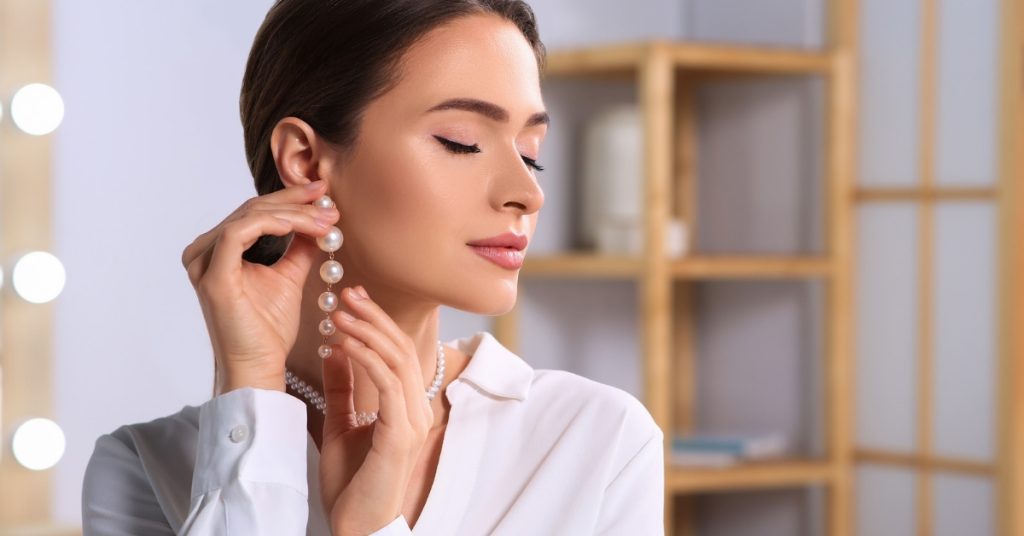
Are there any age restrictions for changing earrings?
No, there are no age restrictions for changing earrings. However, it’s important to take proper care of your piercing and manage any pain associated with the process. Following good aftercare is essential to make sure that the piercing heals properly.
Can I change my earrings myself or do I need a professional piercer?
You can change your earrings yourself, but it is important to use proper cleaning techniques and follow the healing process correctly. A professional piercer can also help you with this if needed.
What are the signs of an infection in my piercing?
Your piercing is like a beautiful rose; if you don’t take care of it, it can become infected. Signs of infection include redness, swelling and pain. To reduce the risk of infection, use clean technique when changing your earring and keep your hands clean.
Are there any risks associated with changing my earrings too frequently?
Yes, there are risks associated with changing your earrings too frequently. It can disrupt the healing process and cause prolonged irritation to the piercing site. Consider non-piercing options, such as clip-on earrings, which provide a stylish option without any of the risks associated with piercings.
What should I do if I’m allergic to certain earring materials?
According to the American Academy of Dermatology, 8% of Americans are allergic to certain metals. If you’re one of them, try switching to non-metal materials or hypoallergenic jewelry. These options can help reduce irritation and inflammation in your sensitive ears.
Conclusion

Before you can change your earrings, it’s important to consider the time frame and any possible complications that could arise. Be sure to clean and sanitize your piercings properly before inserting or removing a new pair of earrings.
With so many different types of earrings available, it can be difficult to know which ones are best for you. Why not try hypoallergenic materials for a safer option? Ultimately, the decision is yours.
When changing your earrings, make sure you do it safely and at the right time – but when’s that exactly? That’s something only you can answer!





